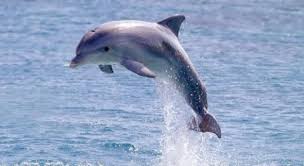Full Pane: Dolphins & Whales of the World (Niuafo'ou 2020)
Dolphins & Whales of the World (Niuafo'ou 2020)
28 January (Niuafo'ou ) within release Dolphins & Whales of the World (2020) goes into circulation Full Pane Dolphins & Whales of the World face value 2*142.10 Tongan pa'anga
| Full Pane Dolphins & Whales of the World in catalogues | |
|---|---|
| Michel: | Mi: TO-NI 773-776KB |
Full Pane is square format.
Also in the issue Dolphins & Whales of the World (2020):
- Stamp - Atlantic Spotted Dolphin (Stenella frontalis) face value 75;
- Stamp - Bryde's Whale (Balaenoptera brydei) face value 1;
- Stamp - Short-Beaked Common Dolphin (Delphinus delphis) face value 5;
- Stamp - False Killer Whale (Pseudorca crassidens) face value 11.80;
- Souvenir Sheet - Bryde's Whale (Balaenoptera brydei) face value 18.55;
- Stamp - Atlantic Spotted Dolphin (Stenella frontalis) face value 75;
- Stamp - Bryde's Whale (Balaenoptera brydei) face value 1;
- Stamp - Short-Beaked Common Dolphin (Delphinus delphis) face value 5;
- Stamp - False Killer Whale (Pseudorca crassidens) face value 11.80;
- Mini Sheet - Dolphins & Whales of the World face value 37.10;
- Stamp - Atlantic Spotted Dolphin (Stenella frontalis) face value 75;
- Stamp - Bryde's Whale (Balaenoptera brydei) face value 1;
- Stamp - Short-Beaked Common Dolphin (Delphinus delphis) face value 5;
- Stamp - False Killer Whale (Pseudorca crassidens) face value 11.80;
- Stamp - Blue Whale (Balaenoptera musculus) face value 60;
- Stamp - Blue Whale (Balaenoptera musculus) face value 60;
- Stamp - Blue Whale (Balaenoptera musculus) face value 60;
- Stamp - Bottlenose Dolphin (Tursiops truncatus) face value 20;
- Stamp - Bottlenose Dolphin (Tursiops truncatus) face value 20;
- Stamp - Bottlenose Dolphin (Tursiops truncatus) face value 20;
- Se-tenant - Dolphins & Whales of the World face value 18.55;
- Souvenir Sheet - Dolphins & Whales of the World face value 142.10;
- Se-tenant - Dolphins & Whales of the World face value 142.10;
- Stamp - Pacific White-sided Dolphin (Lagenorhynchus obliquidens) face value 50;
- Stamp - Pacific White-sided Dolphin (Lagenorhynchus obliquidens) face value 50;
- Stamp - Pacific White-sided Dolphin (Lagenorhynchus obliquidens) face value 50;
- Stamp - Short-finned Pilot Whale (Globicephala macrorhynchus) face value 12.10;
- Stamp - Short-finned Pilot Whale (Globicephala macrorhynchus) face value 12.10;
- Stamp - Short-finned Pilot Whale (Globicephala macrorhynchus) face value 12.10;
- Full Pane - Dolphins & Whales of the World face value 2*142.10;
Full Pane Dolphins & Whales of the World it reflects the thematic directions:
Animals are multicellular, eukaryotic organisms of the kingdom Animalia (also called Metazoa). All animals are motile, meaning they can move spontaneously and independently, at some point in their lives. Their body plan eventually becomes fixed as they develop, although some undergo a process of metamorphosis later on in their lives. All animals are heterotrophs: they must ingest other organisms or their products for sustenance.
A dolphin is an aquatic mammal within the infraorder Cetacea. Dolphin species belong to the families Delphinidae (the oceanic dolphins), Platanistidae (the Indian river dolphins), Iniidae (the New World river dolphins), Pontoporiidae (the brackish dolphins), and possibly extinct Lipotidae (baiji or Chinese river dolphin). There are 40 extant species named as dolphins.
Marine mammals are mammals that rely on marine (saltwater) ecosystems for their existence. They include animals such as cetaceans (whales, dolphins and porpoises), pinnipeds (seals, sea lions and walruses), sirenians (manatees and dugongs), sea otters and polar bears. They are an informal group, unified only by their reliance on marine environments for feeding and survival.



